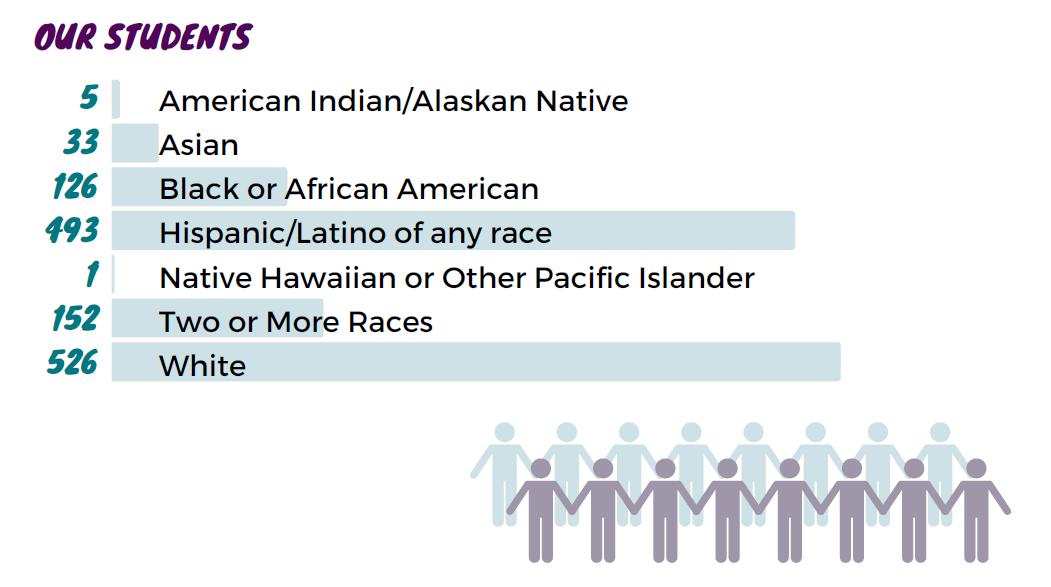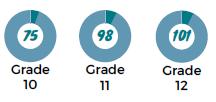




Introduction
Mission Framework
Organizational Chart
LEARN Leadership Team
Demographics
LEARN Students
Regional Educational Service Centers (RESCs)
Connecticut General Statute
Your Role as a Board Member
Differences: RESCs & LEAs
Glossary
Equity in Education

N T R O D U C T I O N
This board member handbook is intended to serve as a quick reference guide for members of the LEARN Board of Directors. It is designed to assist board members in understanding the regional educational service center (RESC) they govern, answer basic questions about their role in the RESC, and point them in the right direction to obtain additional information. A tremendous amount of information about LEARN, its operations, and the role of board members is contained in the Board Policies and Procedures section of our website


LEARN is a regional educational service center (RESC), serving 25 towns, 24 school districts, and 21 superintendents in Southeastern Connecticut Established in 1967 by local districts, LEARN is one of the six RESCs in the state The purpose of each RESC is to enhance the quality of education and provide solutions to identified needs through a wide range of programs and services
LEARN currently serves 25 towns and communities with a student population of nearly 40,000. Through its leadership and resources and by working with schools, students, families, and other community agencies, LEARN promotes regional and statewide cooperation and provides a framework for districts to achieve their goals.
LEARN is a public, educational agency governed by a board of directors comprised of one elected board of education member from each district The source of funding is local districts, state contracts and grants, federal grants, and private foundations.


L E A D E R S H I P

Katherine Ericson
Executive Director
860.434.4800, ext. 1345 kericson@learn.k12.ct.us
Jessica Silvestro Principal
The Friendship School
860 447 4049
jsilvestro@learn k12 ct us
Mariana Reyes Principal
Regional Multicultural Magnet School
860 437 7775
mreyes@rmms k12 ct us
Tara Amatrudo Principal
Marine Science Magnet High School
860 446 9360
tamatrudo@msmhs com
Brad Columbus Principal
Three Rivers Middle College Magnet High School
860 215 9055
bcolumbus@learn k12 ct us
Erica Mahon Principal
Specialized Programs
860 400 0840
emahon@learn k12 ct us
Linda T Darcy, Ed D Director
Office of Teaching & Learning
860 434 4800
ldarcy@learn k12 ct us
Bridgette Gordon-Hickey
Deputy Executive Director

860.400.0840, ext. 2115 bghickey@learn.k12.ct.us
Dr. Ryan Donlon, Ed.D. Associate Executive Director
860.434.4800, ext. 1132 rdonlon@learn.k12.ct.us

Sarah Moon Director
Special Services
Student Support Services
860 400 0840
smoon@learn k12 ct us
Adrenna Paolillo Assistant Director
Early Childhood Education department
860 434 4800
apaolillo@learn k12 ct us
Elizabeth (Beth) McCaffery Director
Human Resources
860.434.4800
emccaffery@learn.k12.ct.us
Lance Hagen Director
Information Technology
860 434 4800
lhagen@learn.k12.ct.us
Michelle Cozzi Assistant Director
Information Technology
860 434 4800
mcozzi@learn k12 ct us
Michael Belden Chief Financial Officer
Business Office
860 434 4800
mbelden@learn k12 ct us
Joanne Lund
Assistant Director
Business Office
860 434 4800
jlund@learn k12 ct us
D E M O G R A P H I C S
October 1, 2023
2022-2023 Student Data







10-66
A regional educational service center may be established in any regional state planning area designated in accordance with section 16a-4a upon approval by the State Board of Education of a plan of organization and operation submitted by four or more boards of education for the purpose of cooperative action to furnish programs and services.
OPERATION AND MANAGEMENT (CGS 10-66B)
The operation and management of any regional educational service center shall be the responsibility of the board of such center to be composed of at least one member from each participating board of education, selected by such board of education
POWERS OF BOARD OF CENTER (CGS 10-66C)
...Shall be a Public Education Authority
...the board shall have the authority...to establish policies for the regional educational service center, to determine the programs and services to be provided, to employ staff including the director of the center, to prepare and expend the budget, and to provide for financing of the programs and projects of the regional educational service center.
RESCs are nonprofit, fee-for-service, public education agencies. The operation and management of each RESC is provided by a board, referred to as the LEARN Board of Directors The LEARN Board of Directors is composed of at least one member from each participating local board of education. LEARN designates, from its membership, an executive committee which has the powers of and can act on behalf of the full board.
Within the extent of its legal powers, the LEARN Board of Directors (LEARN Board) has responsibility for conducting the regional educational service center in accordance with the needs and desires of local boards of education. The LEARN Board shall have the power to: apply for, receive directly, and expand on any federal and state grants; receive and disburse funds; employ personnel; enter into contracts; buy, sell, lease, exchange, or accept real or personal property; and provide the programs, services, and activities agreed upon by the member boards of education.
The LEARN Board has the authority to: establish policies for the regional educational service center; determine the programs and services to be provided; employ staff, including an executive director; retain the services of accountants, attorneys, appraisers, and other consultants; prepare and expend the budget; issue bonds, notes, or other obligations; and provide for the financing of the programs and projects of LEARN
The LEARN Board identifies a mission, vision, and goals to guide the agency and is part of a community committed to supporting public education.
The LEARN Board of Directors is a professional entity whose meetings model appropriate business practices. LEARN Board members are asked to prepare for and arrive on time to each meeting. Thank you.
In the absence of any specific rule, "Robert's Rules of Order, Revised" will be considered the authority on parliamentary law.
Each member of the Board shall consider it their duty to appear at every Board meeting prepared to discuss the items appearing on the agenda
The officers as established in the Constitution are: Chairperson, Vice-Chairperson, Secretary, and Fiscal Officer
The Board is committed, both individually and as an organization, to the principals of continuous improvement. The Board looks to identify and provide professional learning opportunities for board members, and board members will be encouraged to participate in those learning opportunities One such example is the National School Board Association Conference LEARN's Executive Director and up to two LEARN Executive Committee members are eligible to attend the National School Board Association convention each year. If no member of the Executive Committee wishes to attend, the Executive Committee may select LEARN Board members as representatives
DIFFERENCES BETWEEN A RESC AND A LOCAL EDUCATIONAL AGENCY (LEA)

State support:
No direct funding from the state
Budget approval:
Authority to earn and receive spending
Carry-over funds:
Yes, except special funds which are generally returned to grantor, or federal monies with limits
Existence: Voluntary
Student base: Received under contract
Statutory base:
C.G.S. Sec. 10-66
Tax authority: None
Governance:
Drawn from member LEA's boards; Executive Committee serves as chair
State support: ECS formula
Budget approval:
Appropriation, ready to spend
Carry-over funds:
No, all funds revert to the town general fund except special funds
Existence: Mandated by law
Student base:
Primary legal responsibility
Statutory base:
C.G.S. Sec.10-1 to 10-320a
Tax authority:
Town or region
Governance:
Direct elected Board, Chairperson
Ever wonder what an educational acronym or word means? Here are some of the most common to help us all as we navigate board related conversations
504. A plan developed to ensure that a child who has a disability identified under the law and who is attending an elementary or secondary educational institution receives accommodations that will ensure their academic success and access to the learning environment.

AACES (Area Cooperative Educational Services). RESC serving south central Connecticut.
ACLU (American Civil Liberties Union). ACLU protects individual rights set forth in the U.S. Constitution.
ADA (Americans with Disabilities Act). A federal law protecting the rights of persons with disabilities in all areas of public life.
AESA (Association of Educational Service Agencies). A professional organization serving educational service agencies in 45 states; there are 553 agencies nationwide.
ARP (American Rescue Plan of 2021). This plan is a $1.9 trillion economic stimulus bill passed by the 117th U.S. Congress to speed up the country’s recovery from the economic and health effects of the COVID-19 pandemic.
BASEC (Business Administrators of Southeastern Connecticut). LEARN’s regional network for business administrators.
BPR (The Transition Academy at Boston Post Road). LEARN’s Transition Academy is for students ages 18-22. The program offers customized supports to promote post-school success - academic, life skills, recreation, self-care, social, employment.
CAPSS (Connecticut Association of Public School Superintendents). An organization that represents all of the superintendents and leaders of public schools in Connecticut. The Association’s mission is to lead the continuous improvement of public education for all students by advocating public policy and developing and supporting executive school leaders.
Ever wonder what an educational acronym or word means? Here are some of the most common to help us all as we navigate board related conversations
C (continued)
CES (Cooperative Educational Services).
RESC serving Fairfield County.
COVID Liaison. A COVID Liaison leads the building and monitoring of all systems related to the COVID pandemic. LEARN’s COVID Liaison is Christin Kondash, Nurse Supervisor.
CREC (Capitol Region Education Council).
RESC serving the Greater Hartford area.
CSDE (Connecticut State Department of Education). The Connecticut State Department of Education is the administrative arm of the Connecticut State Board of Education. Through leadership, curriculum, research, planning, evaluation, assessment, data analyses and other assistance, the Department helps to ensure equal opportunity and excellence in education for all Connecticut students.
DSAP (Durational Shortage Area Permit).
EASTCONN. RESC serving northeastern Connecticut
EdAdvance. RESC serving western Connecticut

E (continued)
ECHMC (Eastern Connecticut Health & Medical Cooperative). The Eastern CT Health & Medical Cooperative was established on July 1, 2013 to provide an opportunity for municipalities or local or regional boards of education to join together to achieve regional efficiencies in providing medical or health care benefits for employees.
ESSER (Elementary and Secondary School Emergency Relief). ESSER funds are part of the American Rescue Plan, designed to help schools reopen safely and address significant learning loss that resulted from the COVID-19 pandemic.
ESY (Extended School Year).
EL (English Learners). A national origin minority student who is limited English proficient.
Ever wonder what an educational acronym or word means? Here are some of the most common to help us all as we navigate board related conversations
FFERPA (Family Educational Rights and Privacy Act). A federal law that protects the privacy of student education records.
FMLA (Family and Medical Leave Act of 1993). A federal law designed to help employees balance their work and family responsibilities by allowing them to take unpaid leave for certain family and medical reasons.
GEER (Governor’s Emergency Education Relief). GEER funds are intended to target lower-income areas with identified gaps in remote learning access and ensure that the neediest students and teachers in Connecticut have equal access to remote learning.
IIB (International Baccalaureate). The International Baccalaureate is a global leader in international educationdeveloping inquiring, knowledgeable, confident, and caring young people. Programmes empower school-aged students to take ownership in their own learning and help them develop futureready skills to make a difference and thrive in a world that changes fast.
IEP (Individualized Education Program). A plan that lays out the special education instruction, supports, and services a student needs to thrive in school.

LLEAP (The Learner Engagement and Attendance Program). A state program to help absent and disengaged (K-12) students and their families.
LEARN (Long-range Educational Assistance for Regional Needs). RESC serving southeastern Connecticut.
Magnet Schools. Public schools with specialized courses or curricula. Magnet refers to how the schools draw students from across normal neighborhood/town/school district boundaries. Attendance is voluntary.
MSAP (Magnet Schools Assistance Program). A federal grants program administered by the U.S. Department of Education.
MSSA (Middlesex Shoreline Superintendents Association). A voluntary networking association representing the superintendents and public school leaders in the Middlesex Shoreline area of Connecticut.
Ever wonder what an educational acronym or word means? Here are some of the most common to help us all as we navigate board related conversations
NAEYC (National Association for the Education of Young Children). A professional membership organization that works to promote high-quality early learning for all young children, birth through age eight.
NEASC (New England Association of Schools and Colleges). An independent, voluntary, nonprofit membership organization which partners over 1500 public, independent, and international schools in the US and worldwide.
NSBA (National School Board Association). A federation of state associations and the U.S. territory of the Virgin Islands. NSBA advocates for equity and excellence in public education through school board leadership.

Ever wonder what an educational acronym or word means? Here are some of the most common to help us all as we navigate board related conversations
OOALA (Ocean Avenue LEARNing Academy). LEARN’s Ocean Avenue LEARNing Academy supports students with developmental disabilities such as autism, emotional and behavioral challenges, and complex medical needs. OCR (Office of Civil Rights). A part of the U.S. Department of Health and Human Services, the OCR enforces federal civil rights laws, conscience and religious freedom laws, the Health Insurance Portability and Accountability Act (HIPAA), Security, and Breach Notification Rules, and the Patient Safety Act and Rule, which together protects our fundamental rights of nondiscrimination, conscience, religious freedom, and health information privacy.
OSHA (Occupational Safety and Health Administration). OSHA ensures safe and healthful working conditions for workers by setting and enforcing standards and by providing training, outreach, education, and assistance. OSHA is part of the U.S. Department of Labor.
OEC (Connecticut Office of Early Childhood). OEC oversees a network of early childhood care, education, and development programs. The OEC focuses on the first years of children’s lives, from birth to age five.

O (continued)
OTL (LEARN’s Office of Teaching and Learning). LEARN’s OTL is the region’s resource for effective and innovative practices in education. Through the work of a team of highly-qualified educators, OTL delivers customized, cost-effective, high-quality professional learning.
PPerkins Grant or Perkins V. Perkins V is a federal grant providing opportunities to improve Career and Technical Education (CTE), including more flexibility for Connecticut to meet the unique needs of learners, educators, and employers. At LEARN, Perkins V is a grant program overseen by our Office of Teaching and Learning.
PPT (Planning and Placement Team). A PPT is comprised of representatives of a child’s teaching team and a child’s family. At a PPT meeting, the group discusses the child’s evaluation, if the child is eligible for special services, and the child’s Individualized Education Plan (IEP).
Ever wonder what an educational acronym or word means? Here are some of the most common to help us all as we navigate board related conversations
QQuasi-public Agency. Quasi-public generally refers to agencies in the private sector that are supported, in part, by the government with a mandate to provide a given, public service. They are often overseen by an appointed board, commission, or committee.
RRESC (Regional Educational Service Center). RESCs are nonprofit, fee-forservice, public education agencies. Their mission is to provide quality, cost-effective education resources, programs, and services to the state’s public schools. There are 6 RESCs in Connecticut.
LEARN (Long-range Educational Assistance for Regional Needs), serving southeastern Connecticut
ACES (Area Cooperative Educational Services), serving south central Connecticut
CES (Cooperative Educational Services), serving Fairfield County
CREC (Capitol Region Education Council), serving the Greater Hartford area
EASTCONN, serving northeastern Connecticut
EdAdvance, serving western Connecticut

R (continued)
RESC Alliance. In the 1990s, Connecticut’s six RESCs formed the RESC Alliance to create greater access to resources and savings for all Connecticut public schools. Today, the RESCs collaborate to deliver an ever-growing variety of education resources and services that schools and communities couldn’t otherwise afford. The RESC Alliance also advocates at the state legislature for laws that address and respond to the education needs of all Connecticut residents.
SECASA (Southeastern Connecticut Area Superintendents Association). A voluntary networking association representing the superintendents and public school leaders in the Middlesex Shoreline area of Connecticut.
Ever wonder what an educational acronym or word means? Here are some of the most common to help us all as we navigate board related conversations
S (continued)
SERC (Special Education Resource Center)
SERC is a quasi-public agency established under statute to serve the CT State Board of Education in supporting educational equity and excellence.
SSS (LEARN’s Office of Student Support Services). LEARN's Student Support Services Office provides a wide range of high-quality, customized services in support of districts’ education of students with special needs.
TTeval (Teacher Evaluation) or Educator Evaluation. The purpose of the Connecticut educator evaluation and support system is to fairly and accurately evaluate educator and administrator performance and to help each educator strengthen his/her professional practice to improve student learning. Educator evaluation serves to articulate Connecticut's priorities.
Title Grants. Title grants are federal funds under the Office of Elementary and Secondary Education. These funds were originally a provision of the Elementary and Secondary Education Act, which was amended by the Every Student Succeeds Act (ESEA).

T (continued)
Title I. Title I provides federal funds to schools with high percentages of lowincome students. It is a federal entitlement program that gives funds to schools in need based on student enrollment, the free and reduced lunch percentage for each school, and other informative data.
Title III. Title III funding is designed to improve the education of English learners (ELs) by helping students learn English and meet challenging state academic content and student academic achievement standards.
Title IV. Title IV is intended to increase state and local capacity to address three priority areas: provide all students with a well-rounded education; improve school conditions for student learning; and improve the use of technology to improve academic achievement.
Title VI. Title VI protects people from discrimination based on race, color or national origin in programs or activities that receive federal financial assistance.
Title IX. Title IX protects students from discrimination based on sexual orientation and gender identity.
Ever wonder what an educational acronym or word means? Here are some of the most common to help us all as we navigate board related conversations U
USDOE (U.S. Department of Education). A federal government agency promoting student achievement and preparation for global competitiveness by fostering educational excellence and ensuring equal access.
YYCF (LEARN’s Office of Young Children and Families). LEARN’s Young Children & Families Office works with early childhood professionals to ensure high quality experiences and learning for young children. Through innovative and collaborative services, the Office supports the social, emotional, physical, and cognitive development of children throughout the LEARN region.



HOW DO WE APPRECIATE ALL DIVERSITY AT LEARN?

LEARN exists to ensure that every student has the opportunity to reach their greatest potential, and that staff have what they need to assist those students.
Continuously improving LEARN's personal and team equity culture is an agency focus.
HOW DO WE FOSTER A TRUE SENSE OF BELONGING FOR EVERYONE?



WHAT DOES IT LOOK LIKE WHEN STUDENTS HAVE A HIGH-QUALITY EDUCATION AND ACADEMIC PERFORMANCE IS IMPROVED FOR ALL?
WHAT IS OUR UNDERSTANDING OF RACISM IN EDUCATION AND HOW DO WE WORK TO DISMANTLE IT?

